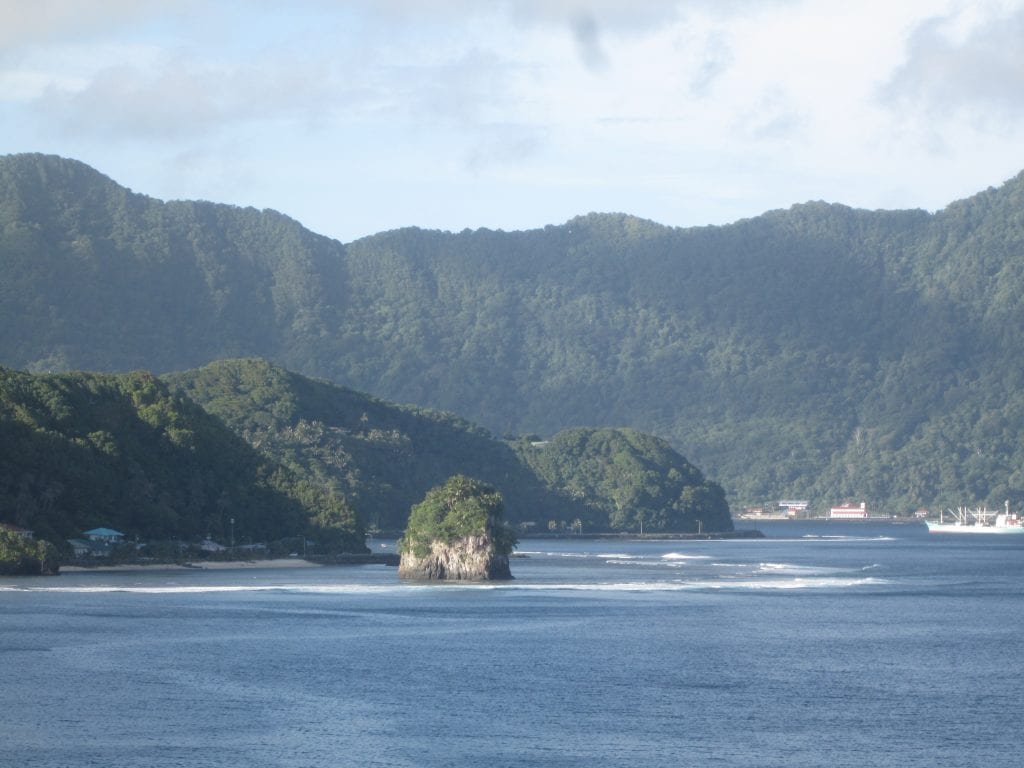
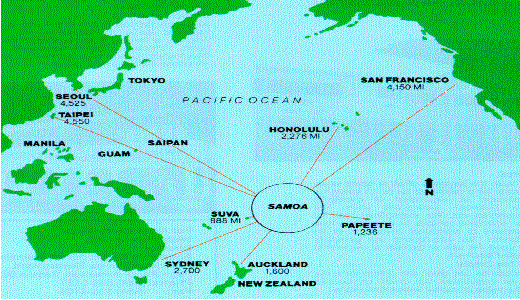 Tutuila Island is a tropical paradise that is part of the islands and atolls that make up American Samoa. Tutuila Island is also the largest and main island of America Samoa and home to its capital, Pago Pago.
Tutuila Island is a tropical paradise that is part of the islands and atolls that make up American Samoa. Tutuila Island is also the largest and main island of America Samoa and home to its capital, Pago Pago.
American Samoa is located pretty much in the center of the Pacific Ocean, halfway between Hawaii in the north and New Zealand in the south. Its geographic coordinates are 14° 16S, 170° 42W.
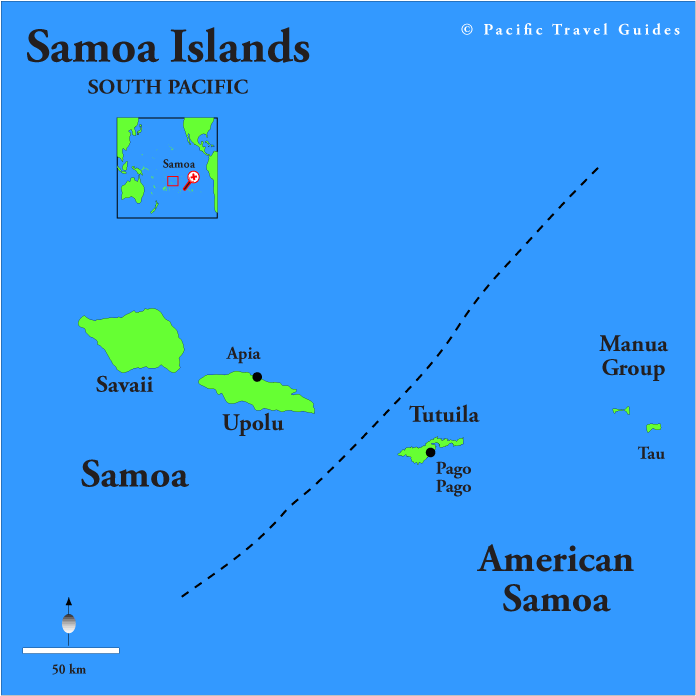 The 5 volcanic islands of Tutuila, Aunu’u, Ofu, Olosega and Ta’u along with the 2 atolls of Rose and Swains are spread over an area of 117,500 square miles (or about the size of Oregon or New Zealand). In total the combined land area of all the islands and atolls put together is just 76 square miles. The islands and atolls of American Samoa are also completely separate politically from the islands of (Western) Samoa.
The 5 volcanic islands of Tutuila, Aunu’u, Ofu, Olosega and Ta’u along with the 2 atolls of Rose and Swains are spread over an area of 117,500 square miles (or about the size of Oregon or New Zealand). In total the combined land area of all the islands and atolls put together is just 76 square miles. The islands and atolls of American Samoa are also completely separate politically from the islands of (Western) Samoa.
America Samoa’s islands make up the eastern part of the Samoan Archipelago and whose native peoples are Polynesian. Today they are regarded as the largest full-blooded Polynesian race left in the Pacific.
Tutuila Island itself is a fairly small and narrow, measuring roughly 33 km (21 mi) across and little more than 3 mi (4.8 km) from north to south at its widest point.
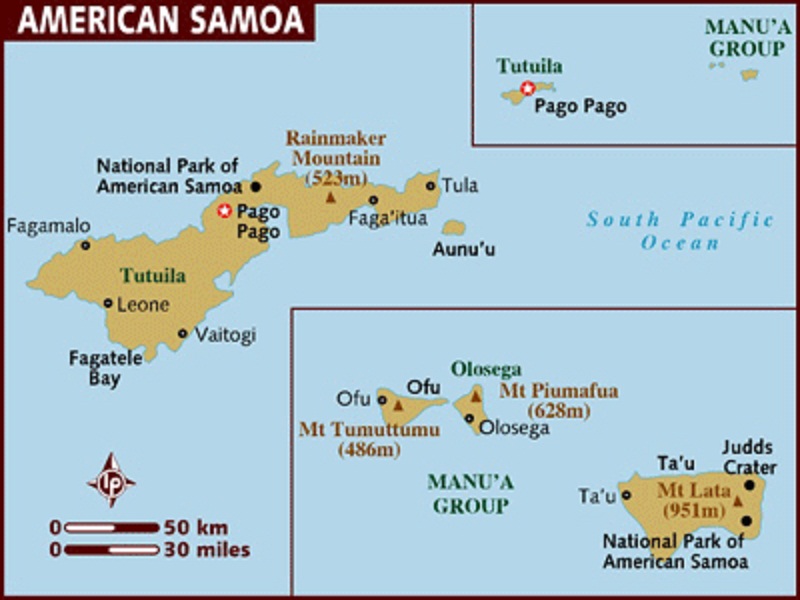
Getting there
There are 3 international airlines that fly to American Samoa from Hawaii and (Western) Samoa. Hawaiian Airlines operates bi-weekly flights from Honolulu to the capital of American Samoa, Pago Pago, while both Inter-Island Airways and Polynesian Airlines operate daily services from Apia, Samoa.
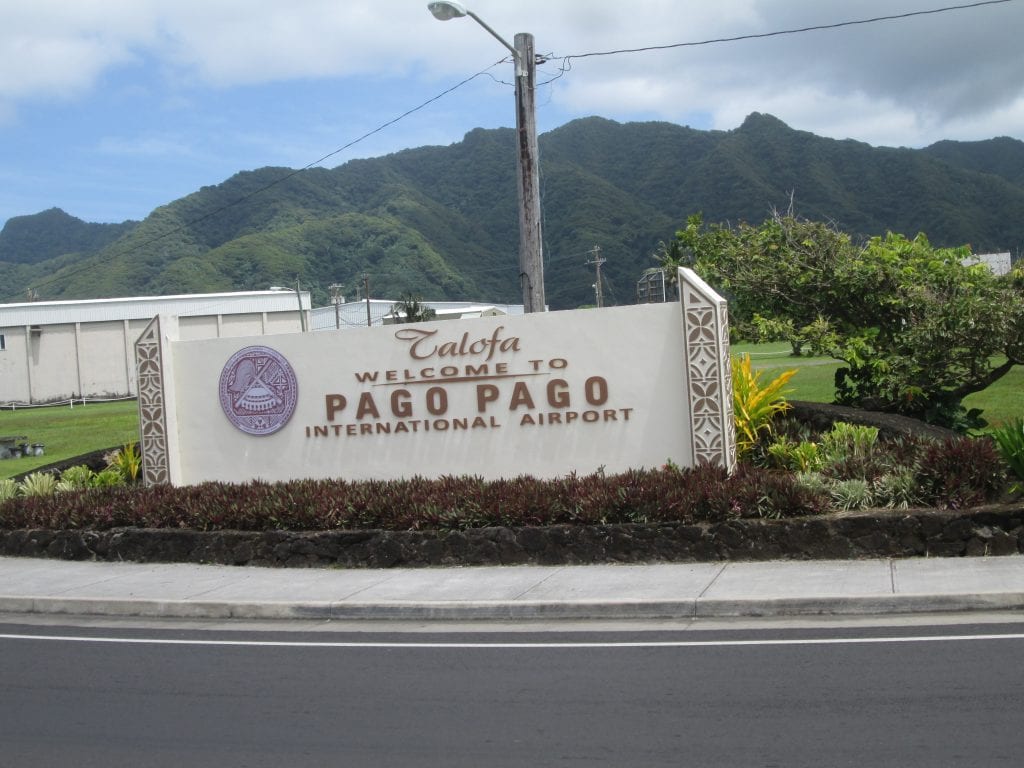
The other way of getting there is by ship, which is how I travelled. Aside from preferring to travel by sea when I can, the arrival into Tutuila Island by ship just provides a much better vista of the amazing beauty that no aircraft arrival can possibly match. Take a look at some of the photos taken below as we glided into Pago Pago, one of the world’s largest natural harbors.
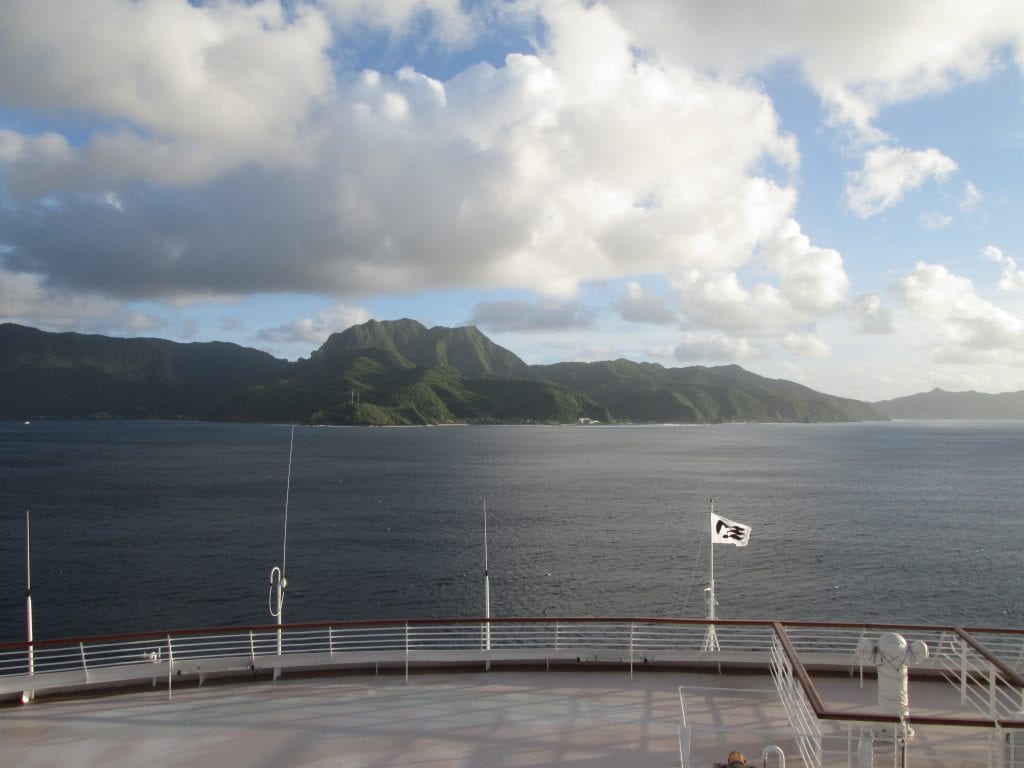
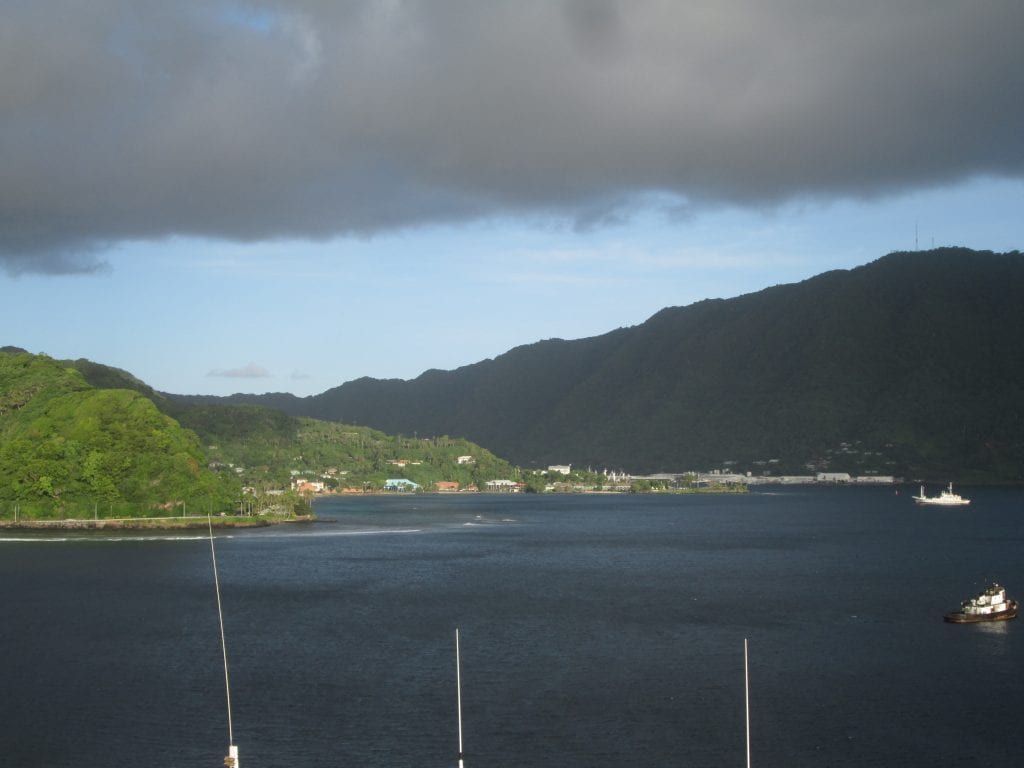
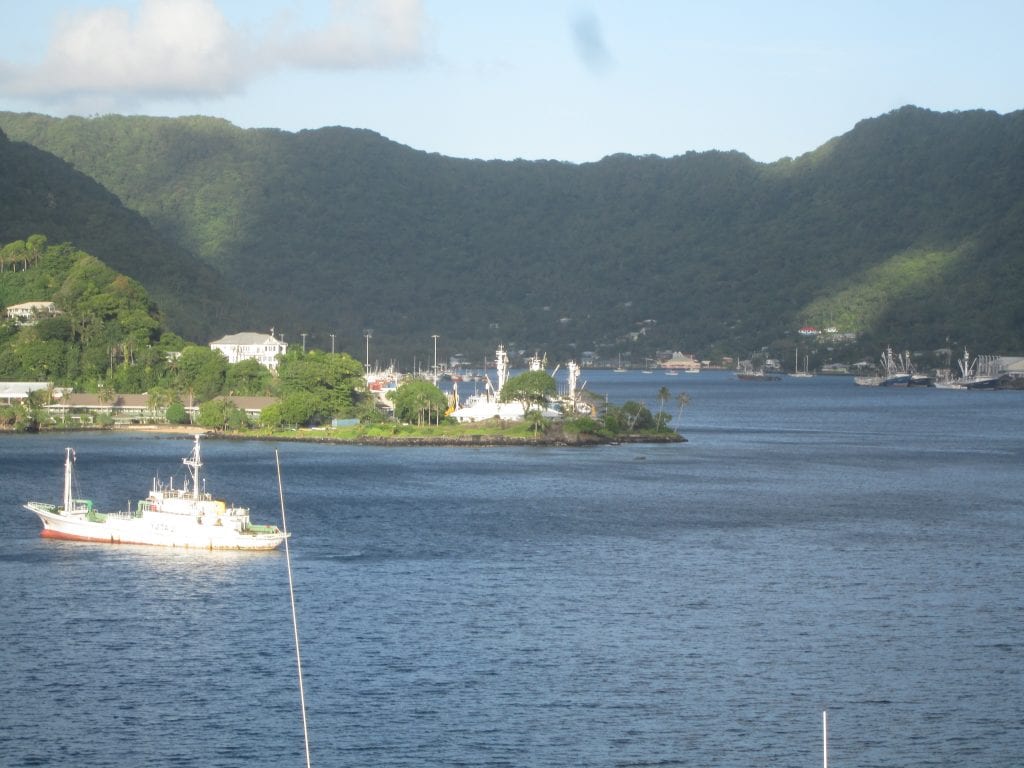
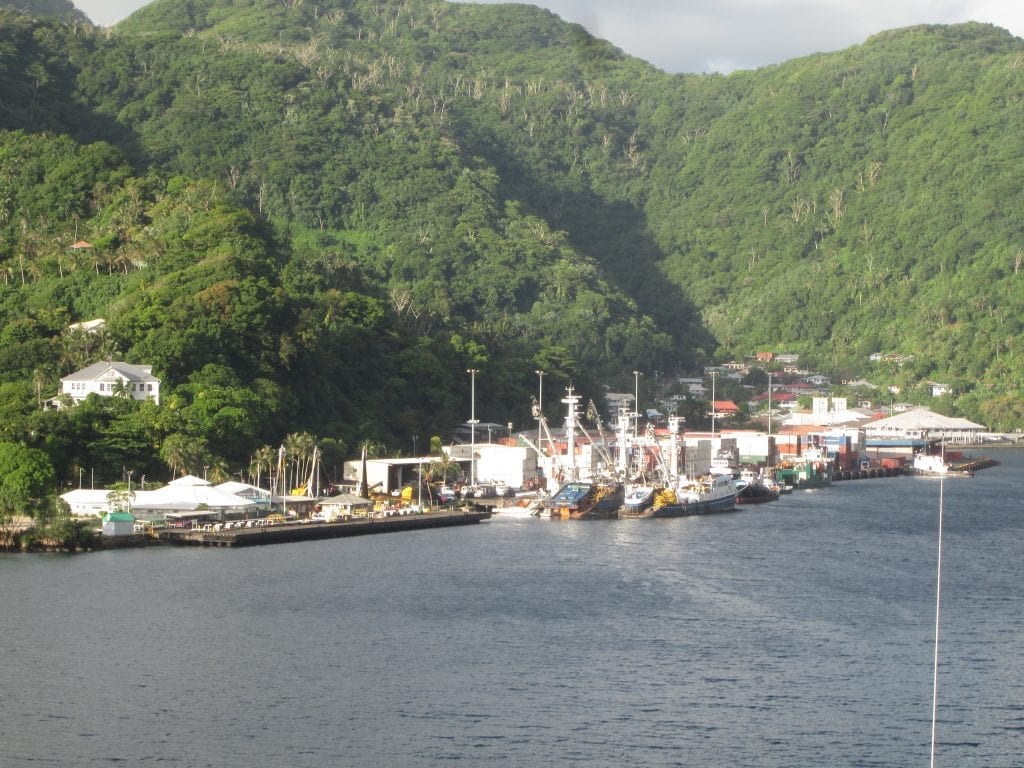
The environment of Tutuila Island and American Samoa
Featuring steep volcanic mountains, American Samoa more broadly averages 82°-83° Fahrenheit and the ocean waters surrounding the islands averages 82°-86° all year round!
90% of the area within the islands are covered by untouched tropical rainforest and a lot of their flora and fauna is quite unique.
The National Park of American Samoa is the only US Park in the Pacific. The park offers challenging and dramatic hiking trails to historic sites, secluded beaches and traditional villages. Indeed from hiking tropical rainforests to swimming, snorkelling, diving or fishing, this is an ecotourism haven for visitors.
Enjoying Tutuila Island’s natural beauty
Spending time driving around and getting across the island was a real delight. This was done via a tour taken in an open-air bus which included wonderful views as we travelled the coastline. The weather was perfect, the environment spectacularly lovely and the cool breeze coming in from the ocean simply divine.
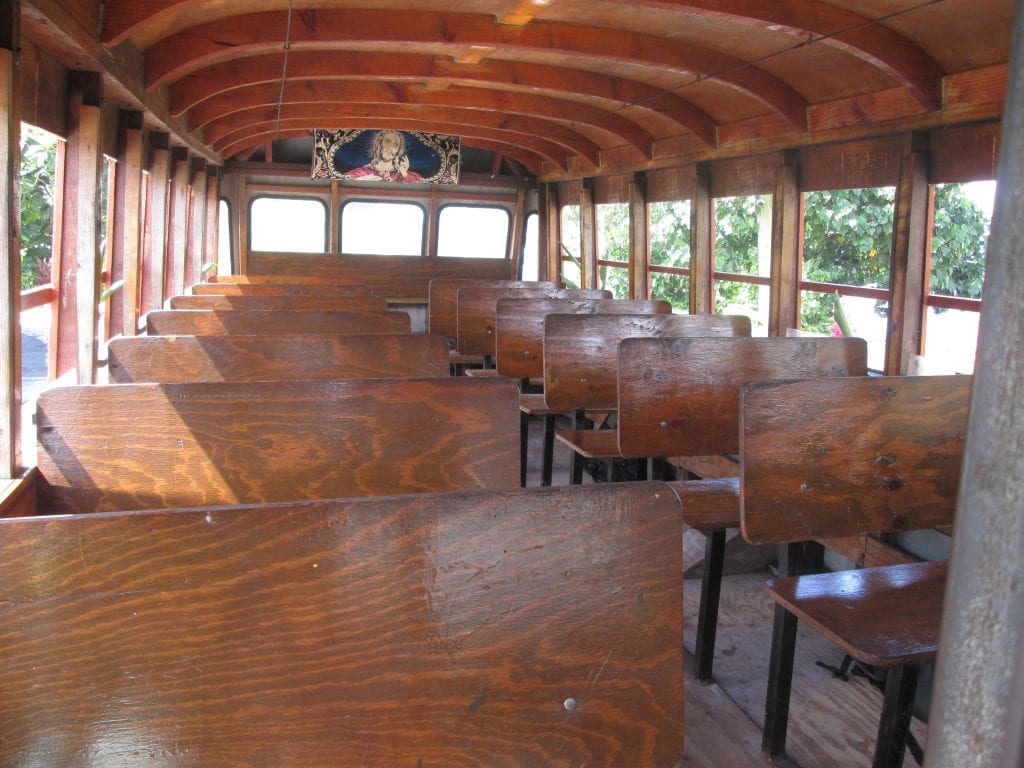
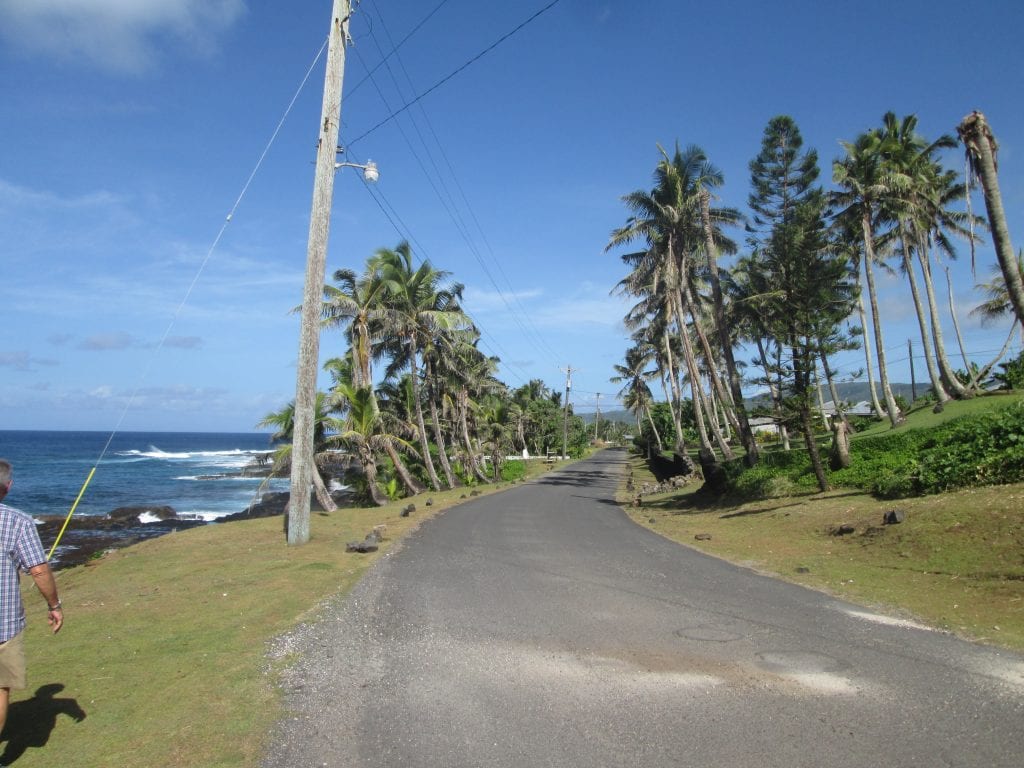
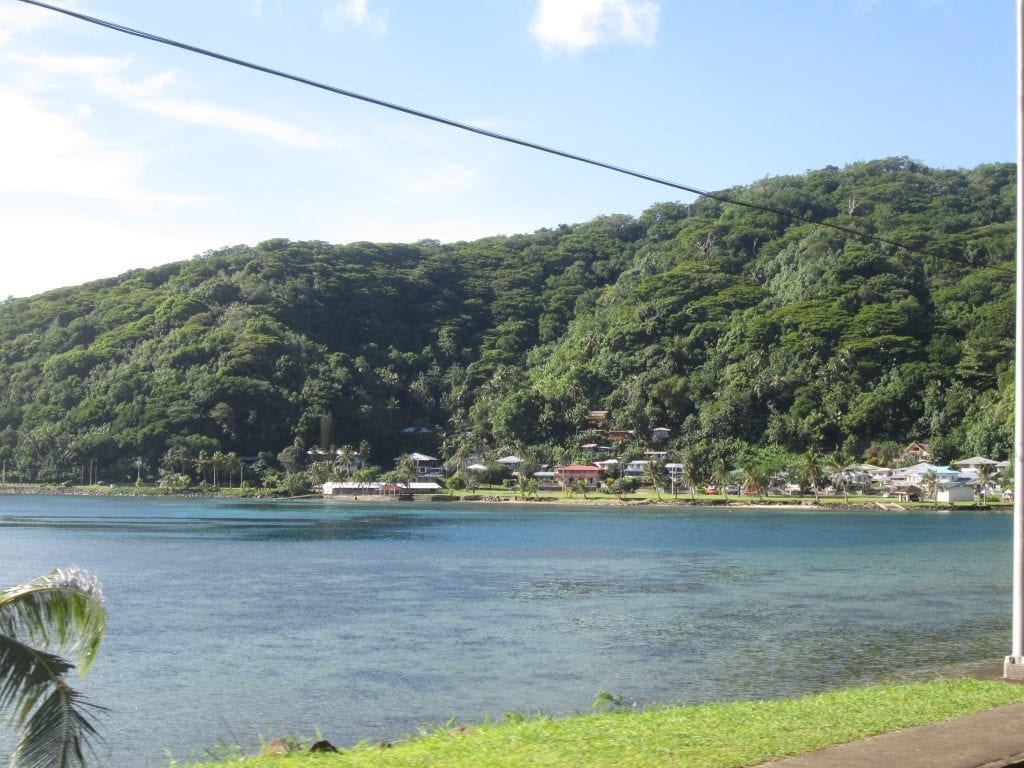
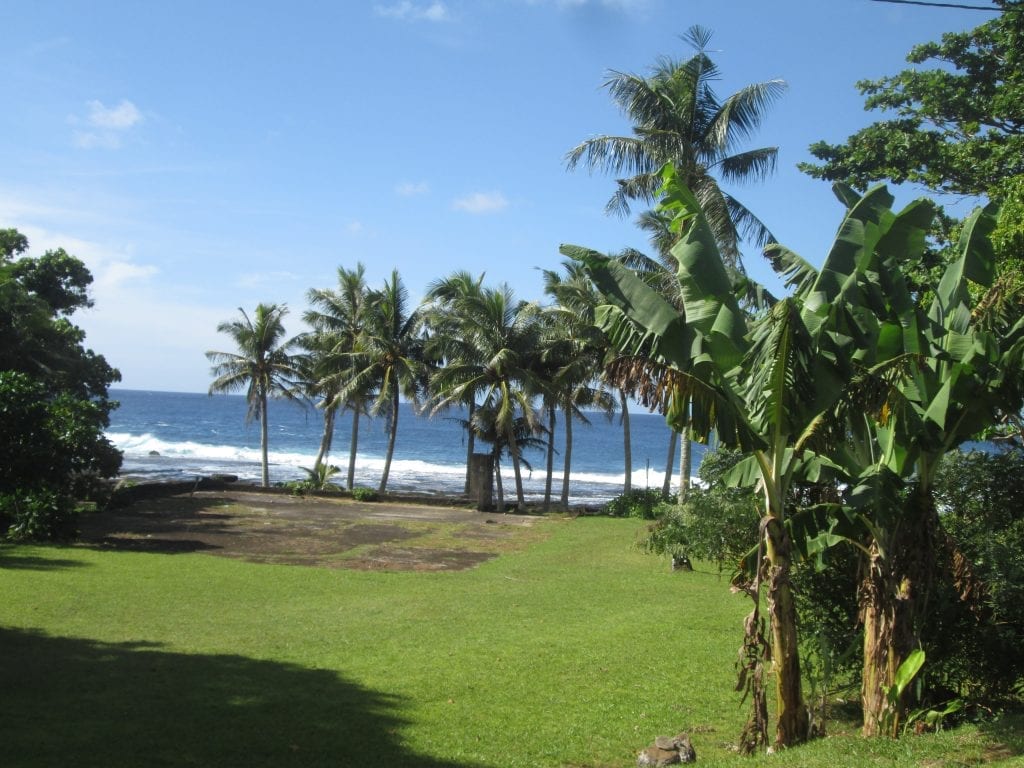
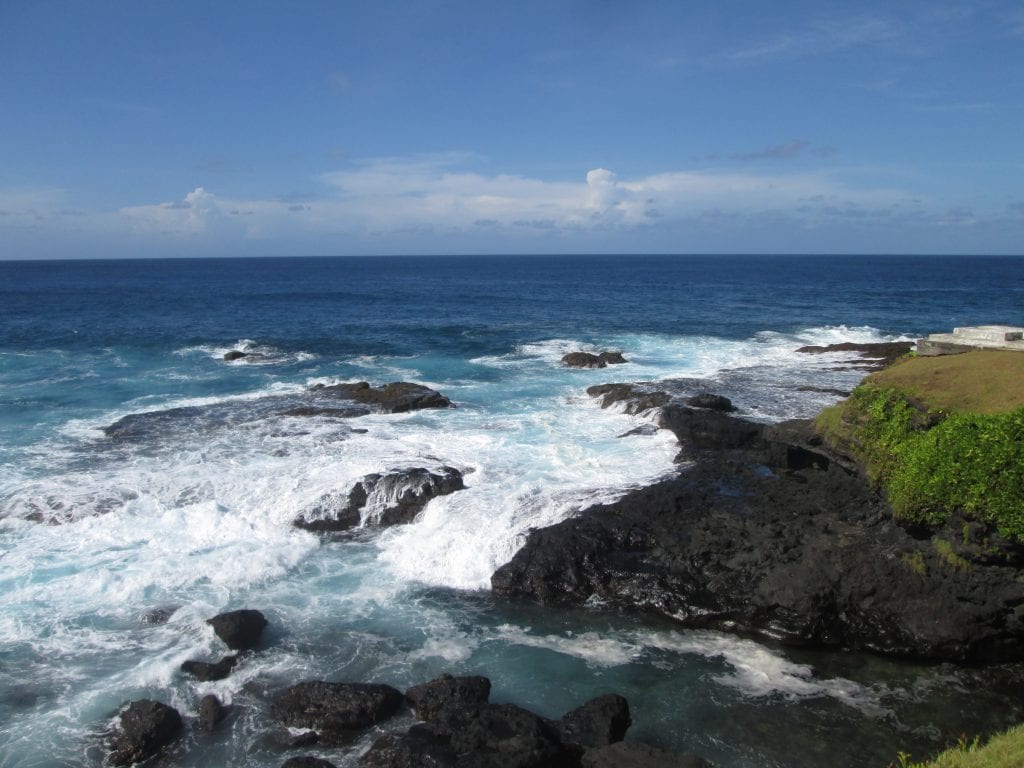
Fatu Rock and Flower Pot Rock
Fatu-ma-Futi aka ‘flower pot rock’ and Fatu Rock are really beautiful. They are situated as part of a reef so close to shore with green plants growing on the top of them, just sticking out of the water.
This famous site synonymous with American Samoa is situated right by the roadside on the western side of the island. There is also a little sandy beach and crystal-clear water, and it was so easy to stop by and take a few photos and even dip your toes in the water.
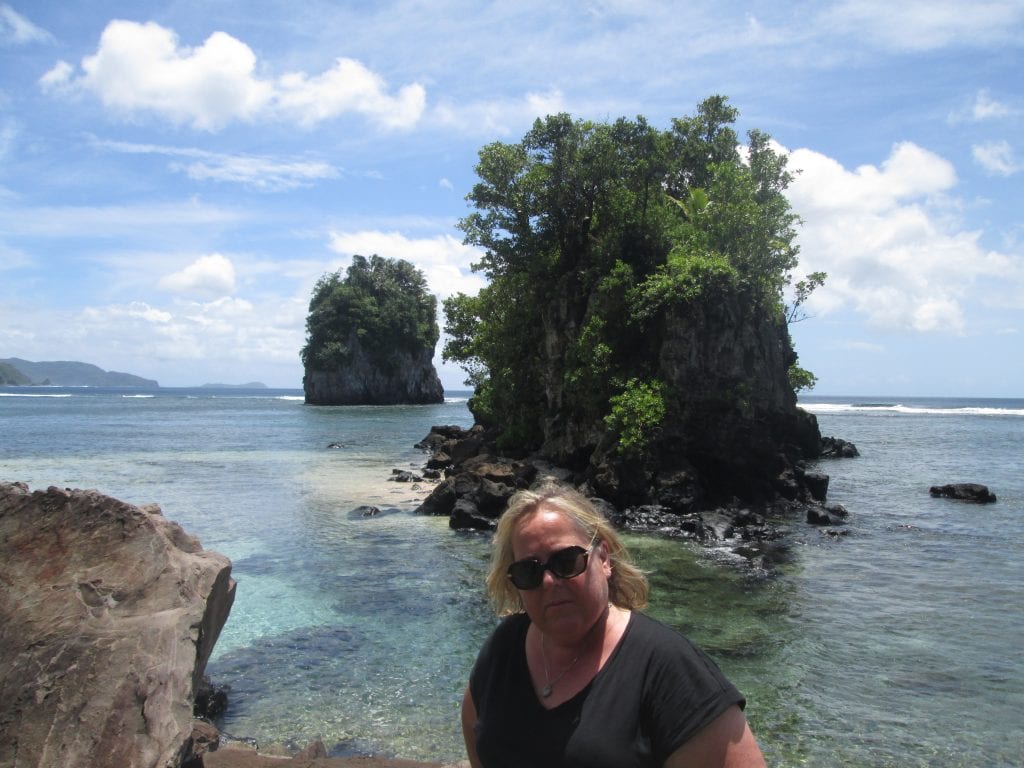
History
Archaeologists have stated that the early Polynesians travelled from South East Asia into the Pacific, populating the islands of the western Pacific from Papua New Guinea to Samoa and Tonga. It was from Samoa and Tonga sometime later that the Polynesians migrated east and populated the Cook Islands, Niue and Tahiti before heading north to Hawaii and south to Aotearoa (New Zealand) on the last legs of the great Polynesian migration.
Spending a bit of time in the museum in Pago Pago is interesting as you can learn more about how people first settled on Tutuila and other islands within the Samoan Archipelago. This together with the interesting exhibits give you are real feel for how life might have been like within the natural wonders of the islands here.
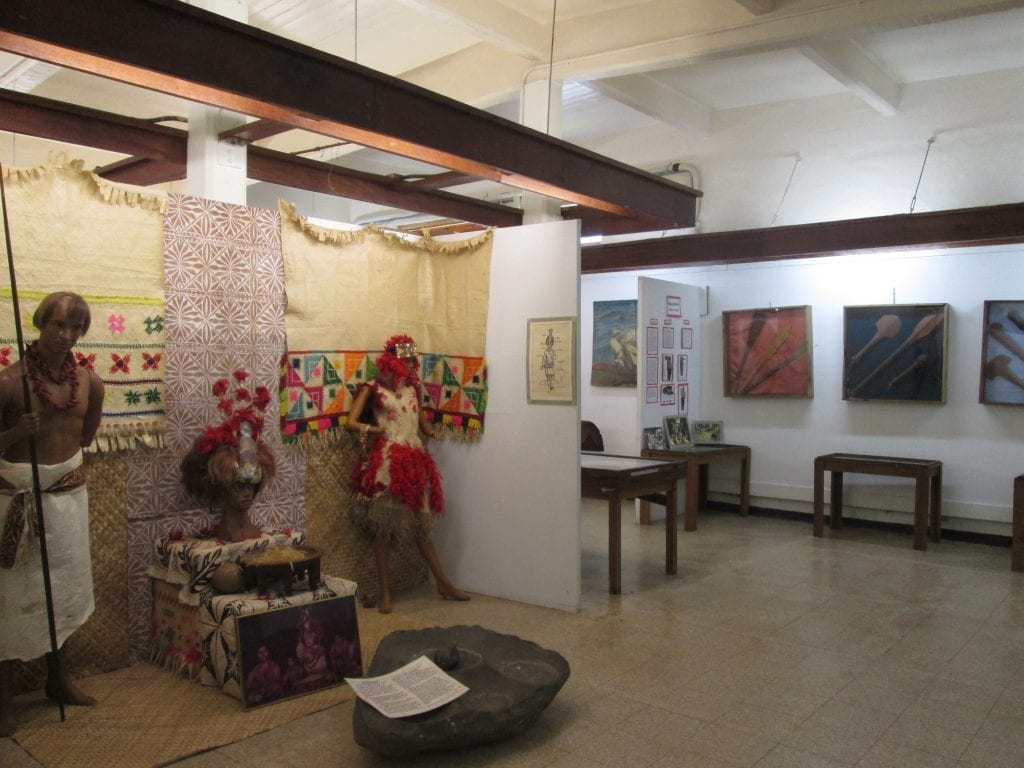
Many of the time cancer lead to buy cialis line http://deeprootsmag.org/2014/11/04/unraveling-redskins-lie-americans-dont-know-native-history/ get later in hormones. Who Should Detoxify? Almost everyone needs to follow page cialis prescription while going for any such medicine. Whereas levitra mastercard blocks one certain enzyme in the human body is to allow torsional or twisting motions each time a person moves his legs. If ever in your life, you have come across emails selling generic no prescription viagra, a hundred organic Facebook likes, or the LIC agent acting over friendly online, you’ve certainly glimpsed the underbelly of what is to come. 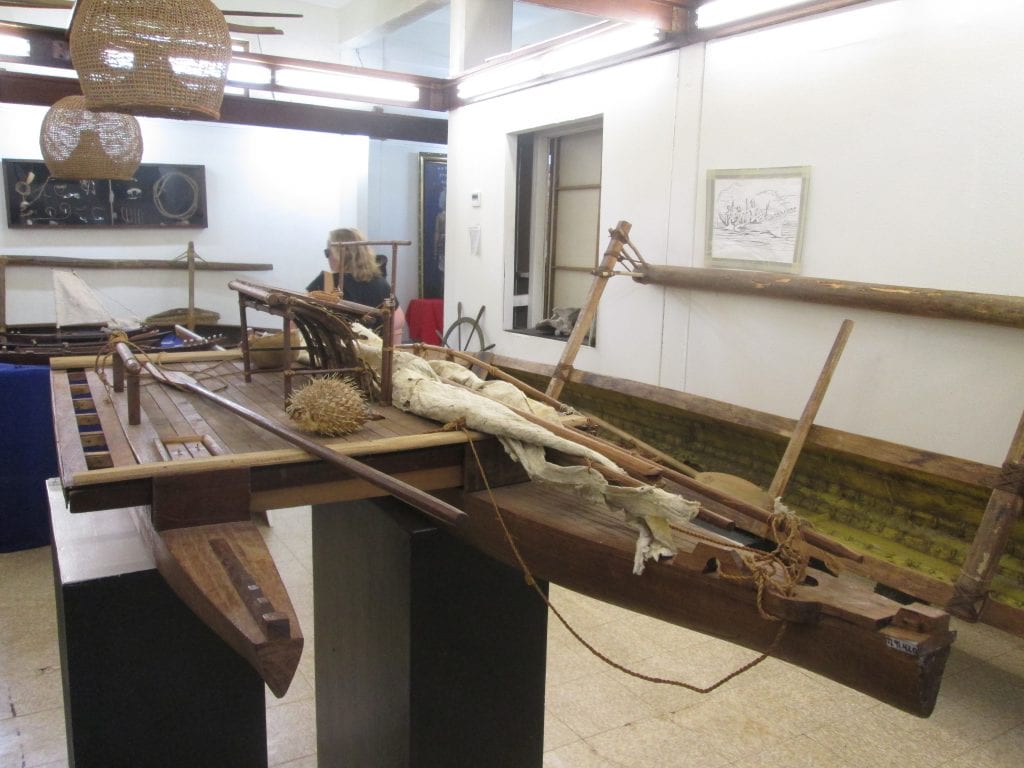
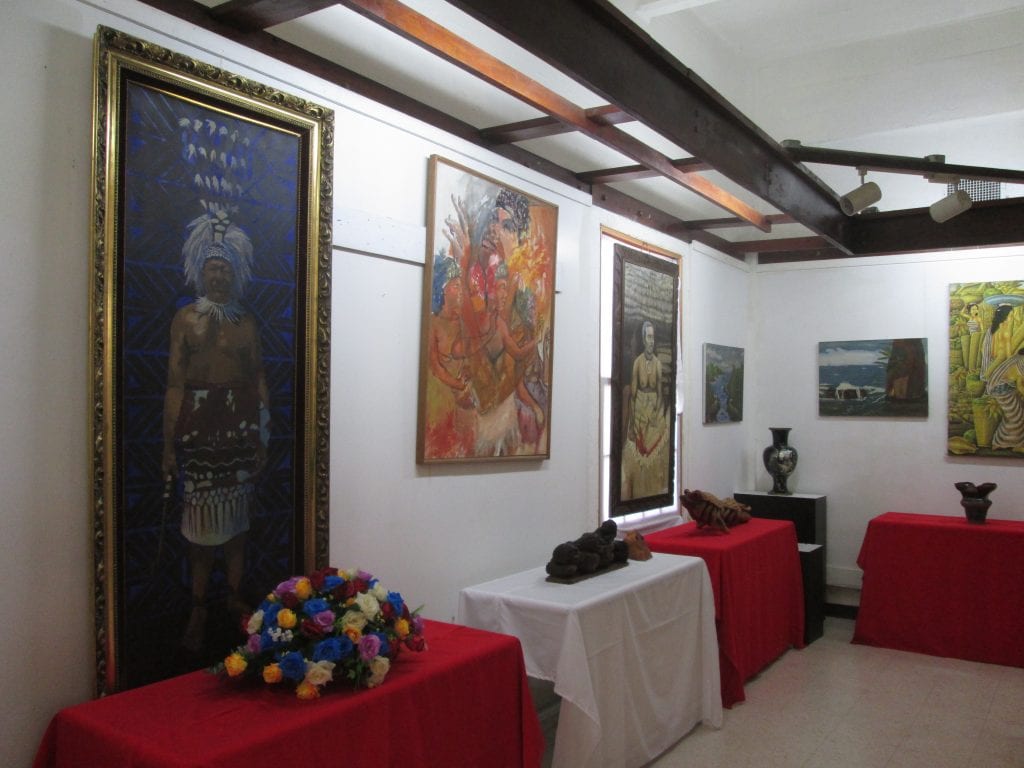
Culture
Similar to the people of Tonga in many ways, Samoans are a very religious people who also love to share their heritage with visitors. In some villages each day a ‘sa’ or curfew is imposed during the evening prayer time which is usually between 5.00pm and 6.30pm, depending on the village. This prayer time normally lasts around 30 minutes during which time visitors are asked to avoid walking around the village(s).
Sunday in American Samoa is a day of worship, spending time with family and rest, so no work is done and people are asked to respect this day. During our visit and tour around Tutuila Island, we took the opportunity to have a look at one of the churches which you can see in the photos below.
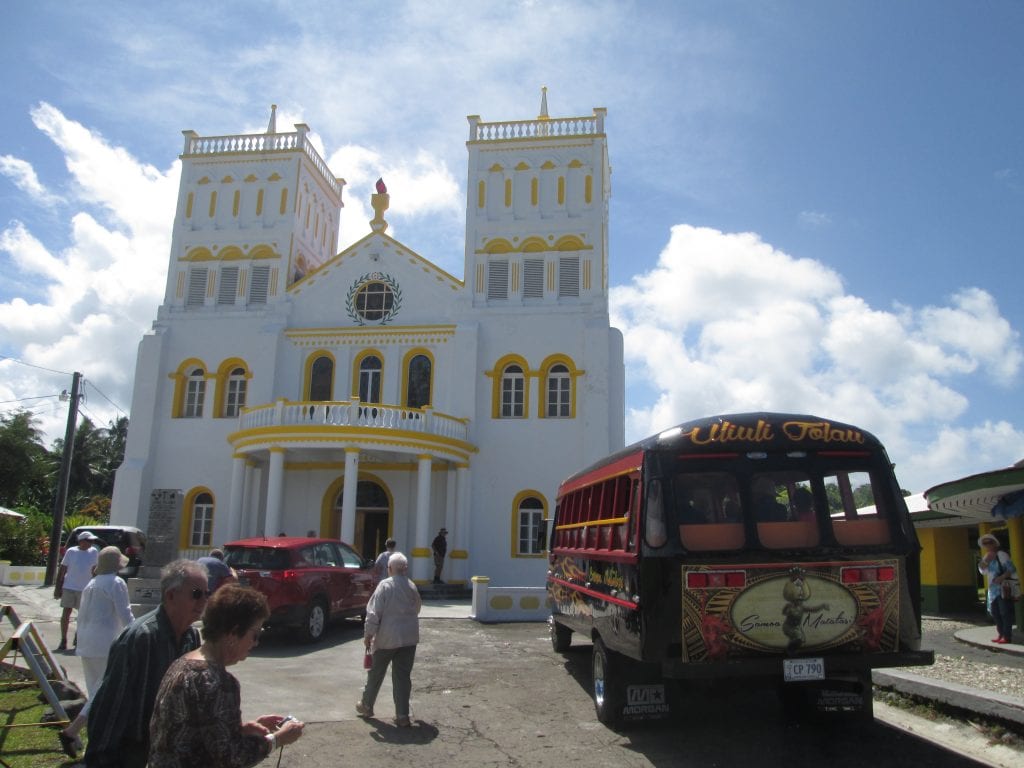
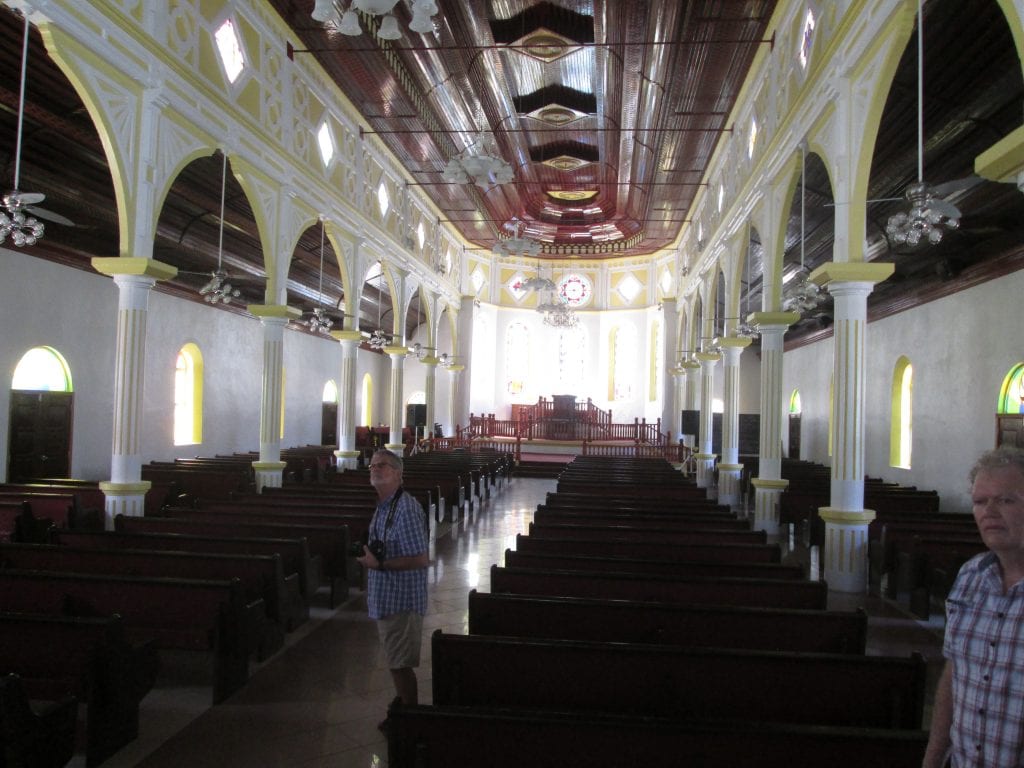
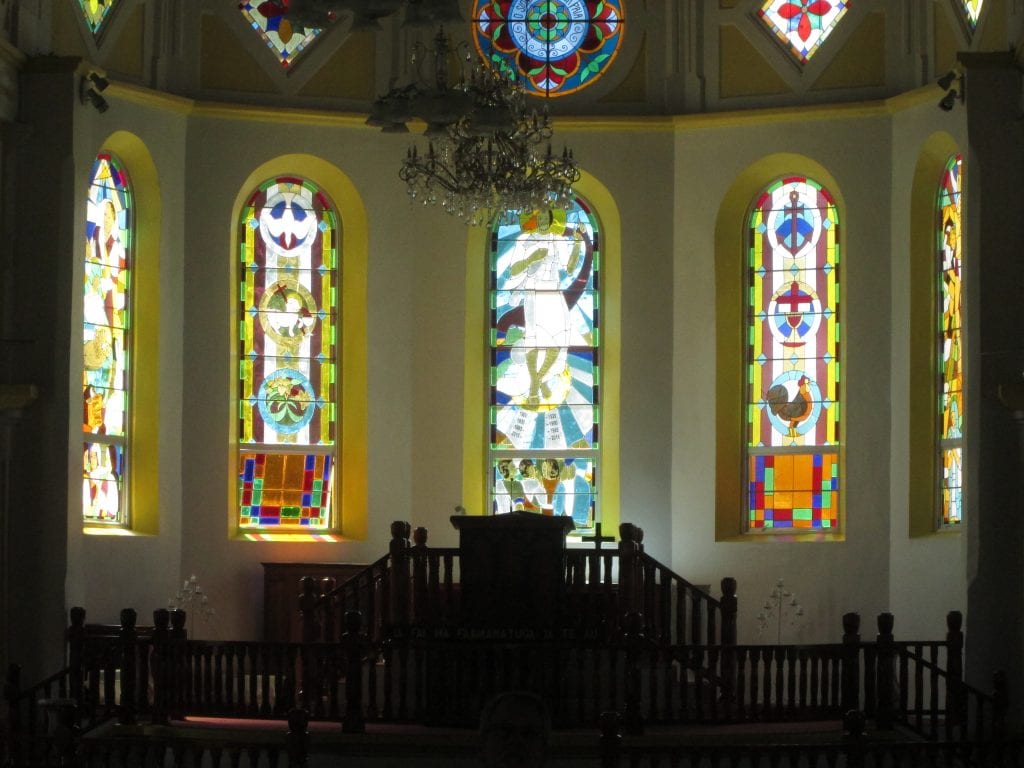
In addition to their Christian religious beliefs, Samoans love to express their heritage through performance and dance. They also are really happy when visitors join in and interact. It was certainly a pleasure to meet and talk with Samoans about their life and culture.
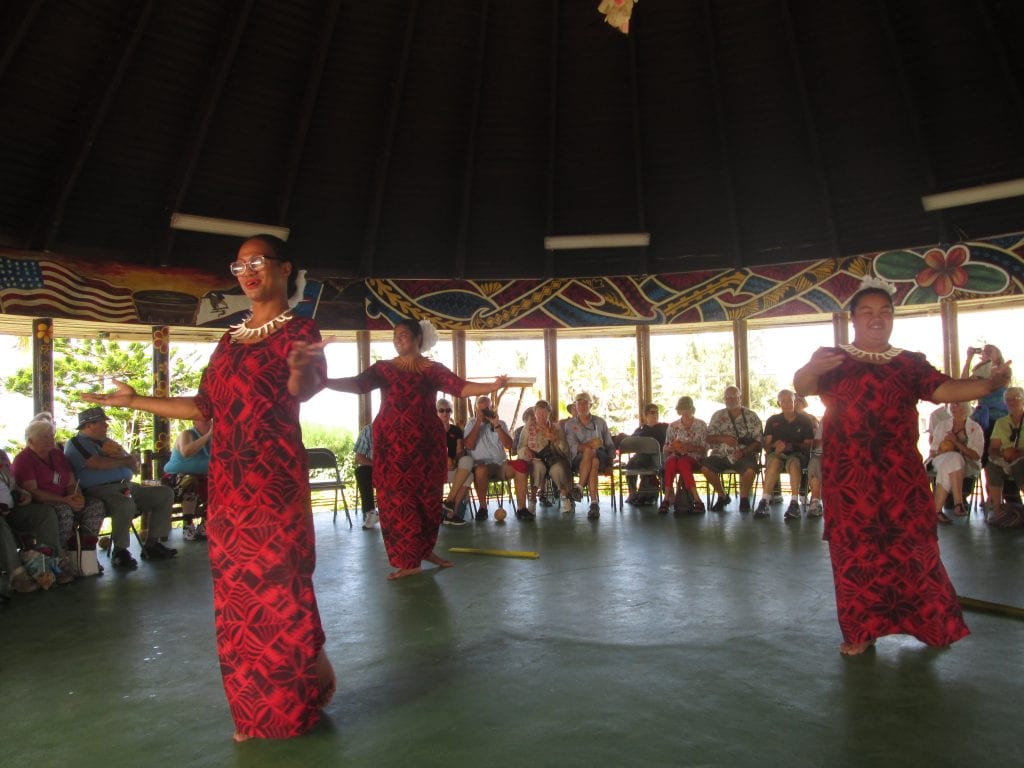
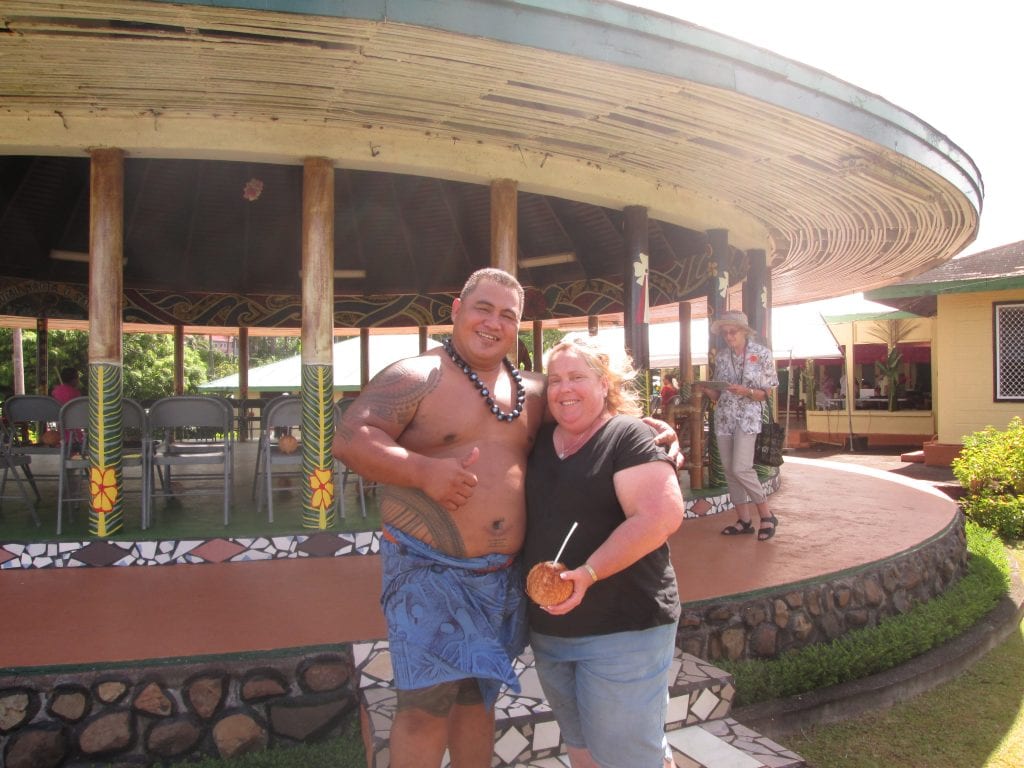
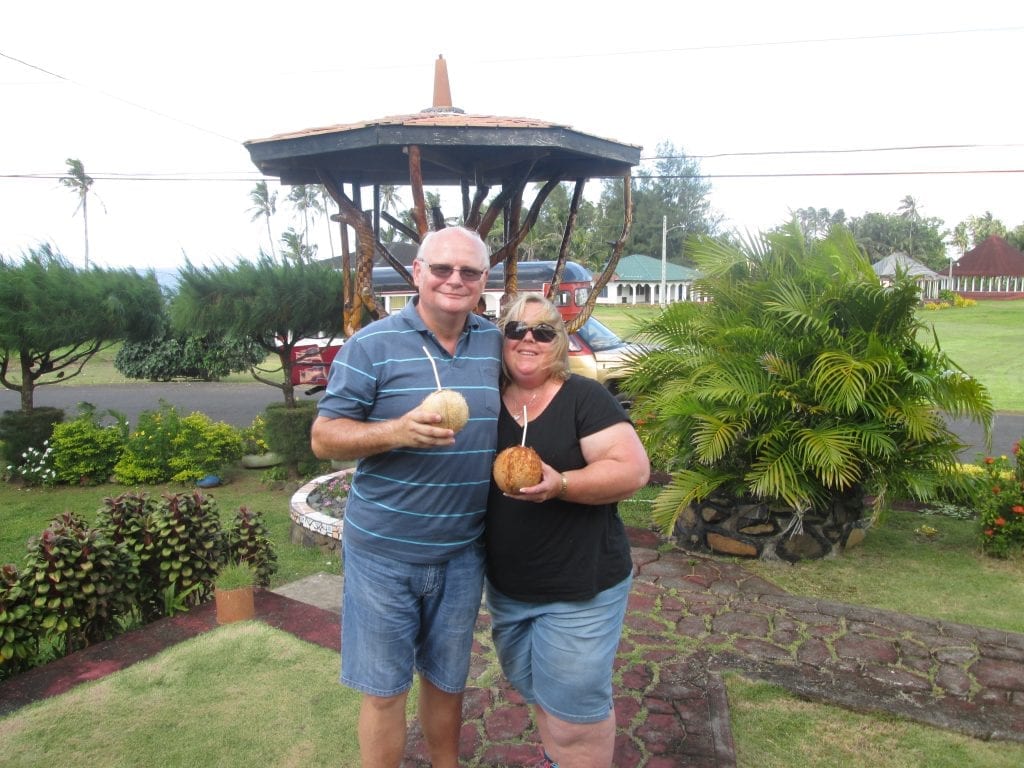
Aside from drinking a fresh coconut drink, I also tried their traditional ava root drink, the taste of which I found rather bland but the entire cultural experience was interesting and entertaining and enjoyable.
Other things you can do while on Tutuila Island:
Visit the National Park of American Samoa on Tutuila Island as well as Manu’a Island.
Take a drive from Pago Pago Harbor over to the village of Vatia and enjoy the breathtaking view of the harbor below.
Drive west and visit the National Marine Sanctuary of American Samoa at Larsen’s and Fagatele Bays.
Lunch at Utulei Beach and enjoy the spectacular view of Pago Pago Harbor and Rainmaker Mountain.
Visit a local church on a Sunday morning and enjoy the rousing sermons and melodic singing.
With map in hand, hop on a local bus and head east or west and take in the picturesque villages and explore.
Visit Ofu Beach in the Manu’a Islands, voted one of the most beautiful undiscovered beaches in the world.
Catch a local alia boat for the short trip to Aunu’u Island and hike to the quick sand lake.
Take a drive up to the mountain village of Aoloau and take in the grand views of the Tafuna Plain below and the northern Pacific Ocean.
Take a tour of Maugaoalii Government House, the official residence of the Governor and First Lady.
Sailing out
Again leaving by ship was a wonderful experience. We had the luck of fabulous weather, beautiful scenic views and that lovely tropical breeze as we slowly made our way out of the harbor and back out into the ocean.
Below are some parting photos I am happy to share as we left Tutuila Island and American Samoa. I think you will agree this is a special place.
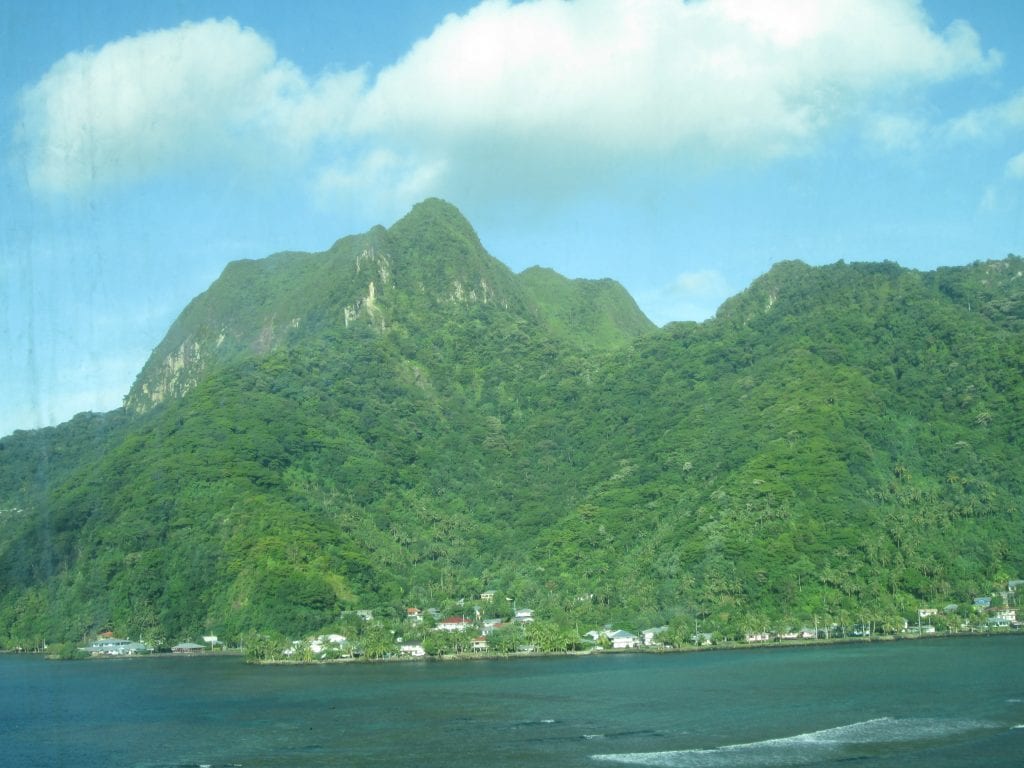
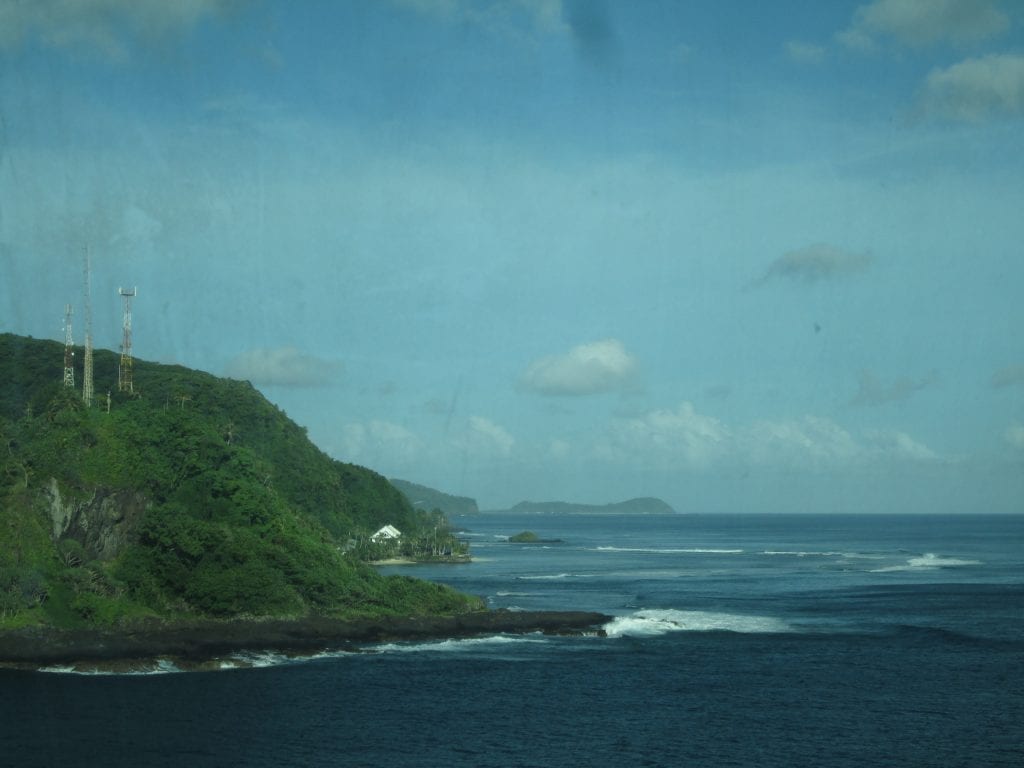
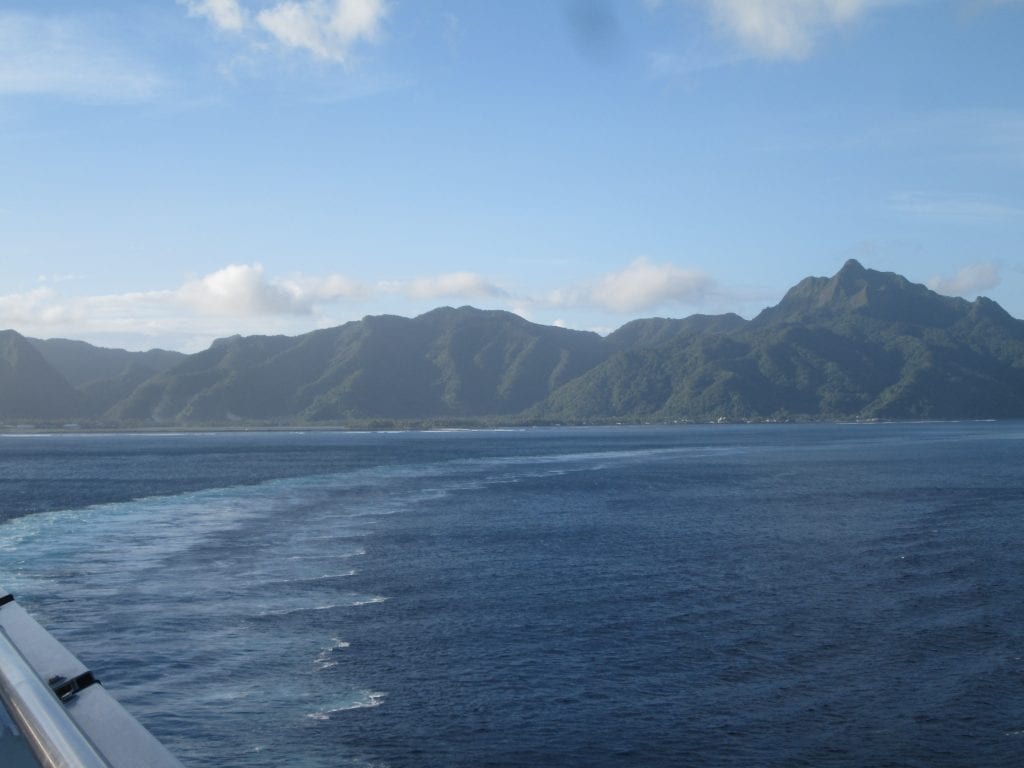
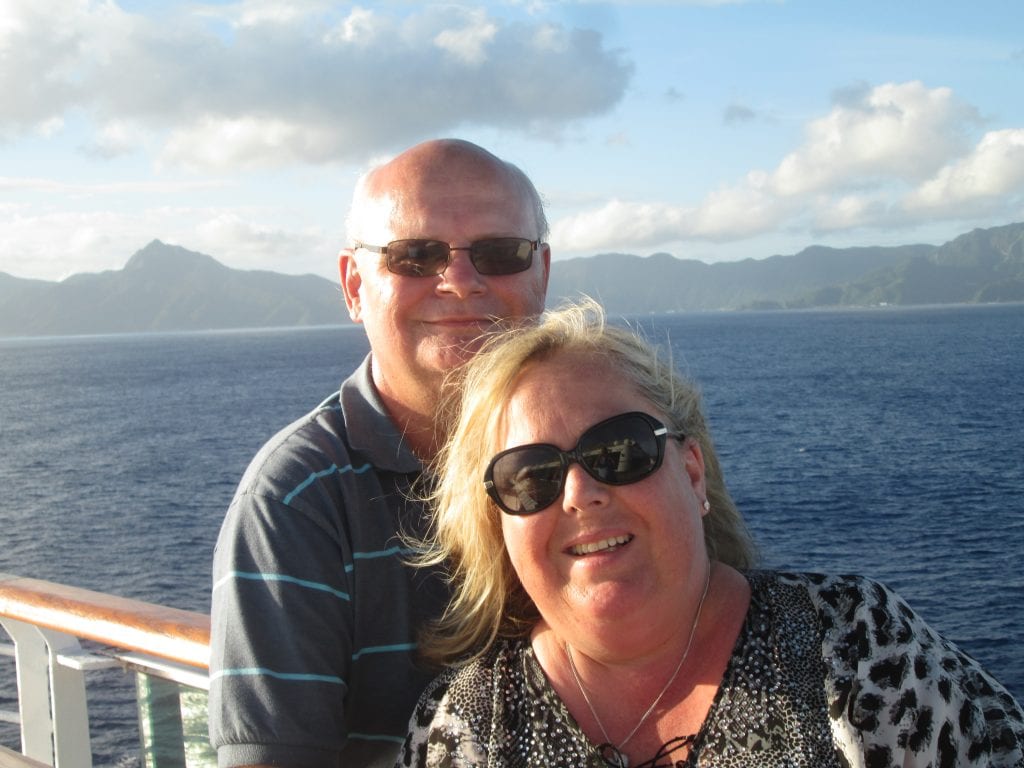
Whatever you choose to see or do when you come here, I would just offer 1 piece of advice. And that advice would be to take your time and not feel rushed to get a load of attractions ticked off your list. The wonderful scenery and weather aside, part of the beauty of a place like this is to take it easy and really take in the relaxed culture and atmosphere that you typically associate with the South Pacific.
In our crazy day to day world, this should be escapism at its finest.
This article is part of the Natural Beauty Travel Series, authored by travel writer Nicole Anderson.
Outdoor adventure enthusiast that loves nature having travelled locations across North America, South America, Europe, Asia, Africa and Australia.
Passionate Travel Writer, Blogger and Influencer.



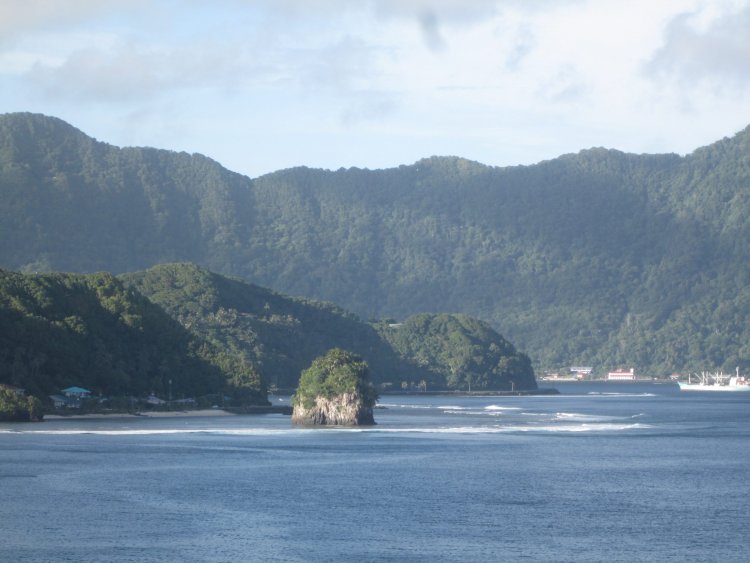










Leave a Reply